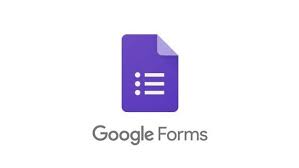Developing Teaching Media for the Students with Special Need
DOI:
https://doi.org/10.31597/sl.v3i2.550Keywords:
learning media, interactive media, BahasaAbstract
The use of media in teaching-learning process becomes a tool of communication between teachers and students. Learning style is not only centered on the teachers, but it concerns on various aspects. Those aspects are transferred into media. Teachers are not the source in learning, yet the teacher should be able to create a media. This research and development are aimed to describe the development of Bahasa and the suitability of the quality for media in teaching Bahasa. This development followed seven steps including 1) researching and collecting data, 2) planning, 3) initial product development, 4) initial trial, 5) revision, 6) field trial, 7) revision and completion of product. The research instruments were interview and questionnaire. The need analysis indicated that the subject needed real media with an interesting color. Another result showed that the media product for teaching Bahasa can be appropriately used by the children with special needs. Therefore, it can be concluded that media for teaching - learning Bahasa for deaf students in one of special needs school in Pontianak is applicable as a media in schools.
References
Educational Communication and Technology.
Gall, M. D., Gall Joyce, P., & Borg Walter, R. (2007). Educational Research. United States of America: Person Education.
Dardjowidjojo, Soenjono. 2010. Psikolinguistik Pengantar Pemahaman Bahasa Manusia.
Jakarta: Obor.
Delphi, B. 2006. Pembelajaran Anak Berkebutuhan Khusus Setting Pendidikan Inklusi.
Bandung: Refika Aditama.
Dewi. Rishe Purnama. 2012. Penentuan Cakupan, Urutan Materi, dan Penentuan Materi
Pembelajaran. Paper Presented in National Seminar of Education.
Yogyakarta: Universitas Sanata Dharma.
Long, G., Vignare, K., Rappold, R. P., & Mallory, J. R. (2007). Access to communication for deaf, hard-of-hearing and ESL students in blended learning courses. The international review of research in open and distributed learning, 8(3).
Mack, N. et al. 2005. Qualitative Research Methods: A Data Collector’s Field Gide. Accessed
20th of Januari 2016. From (http://www.fhi.org).
Marzal, J. 2014. Desain Media Pembelajaran Bahasa Inggris Untuk Siswa Tunarungu
Berbantuan Teknologi Informasi Dan Komunikasi. Tekno-Pedagogi. 4: 32-44.
Millet, P. 2009. Accommodating Students with Hearing Loss in a Teacher of the
Deaf/Hard of Hearing Education Program. Journal of Educational Audiology. 15:
84-90.
Mpofu, J. Chimhenga, S. Mafa, O. (2013). Developing Effective Learning Material to
Students with Hearing Impairment (Hi) Through Odli in Zimbabwe. The
Turkish Online Journal of Distance Education. 14: 44-52.
Munadi, Yudhi. 2010. Media Pembelajaran sebuah Pendekatan Baru. Jakarta: Gaung
Persada Press.
Purwo, Bambang, K. 1990. PELLBA 2 Pertemuan Linguistik Lembaga Bahasa Atma Jaya:
Kedua. Yogyakarta: Kanisius.
Shane. 1982. An Introduction Excepetional Children. United States: WCB.
Thompson. Jenny. Memahami Anak Berkebutuhan Khusus. Jakarta: Esensi Erlangga
Group.
Widoyoko, Eko Putro. 2014. Teknik Penyusunan Instrumen Penelitian. Yogyakarta:
Pustaka Pelajar
Downloads
Published
How to Cite
Issue
Section
License
1. Copyright of this journal is possession of Editorial Board and Journal Manager, by the knowledge of author, whilst the moral right of the publication belongs to the author.
2. Legal formal aspect of journal publication accessibility refers to Creative Commons Atribution-ShareAlike (CC BY-SA), implies that this license lets others remix, adapt, and build upon your work even for commercial purposes, as long as they credit you and license their new creations under the identical terms. This license is often compared to “copyleft” free and open source software licenses.
3. Every publications (printed/electronic) are open access for educational purposes, research, and library. Other that the aims mentioned above, editorial board is not responsible for copyright violation















